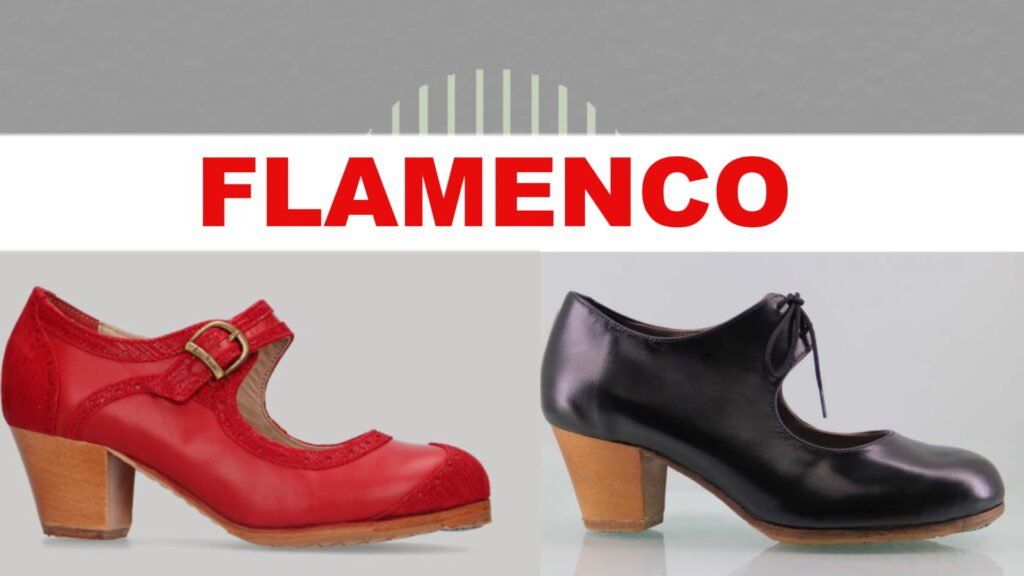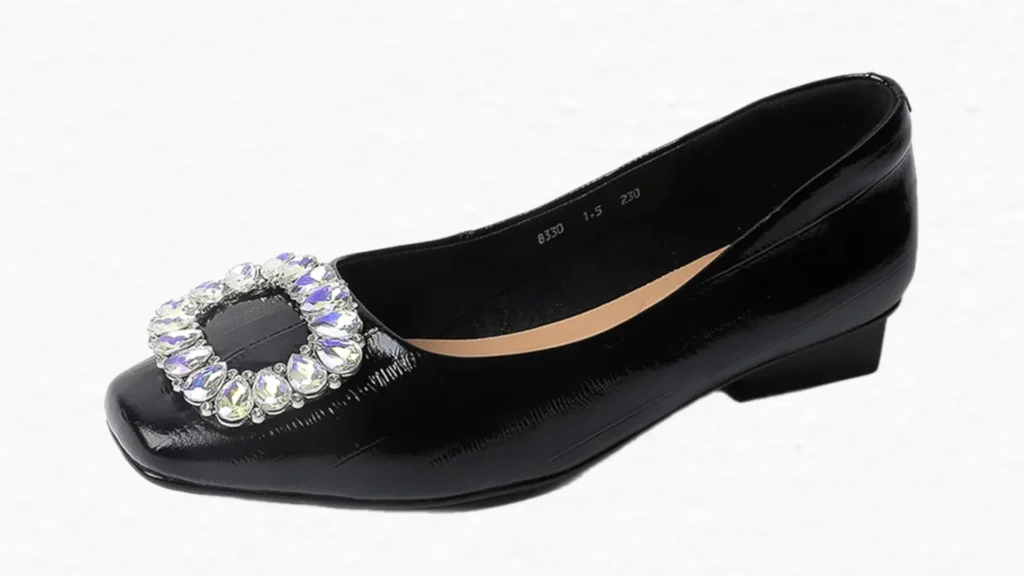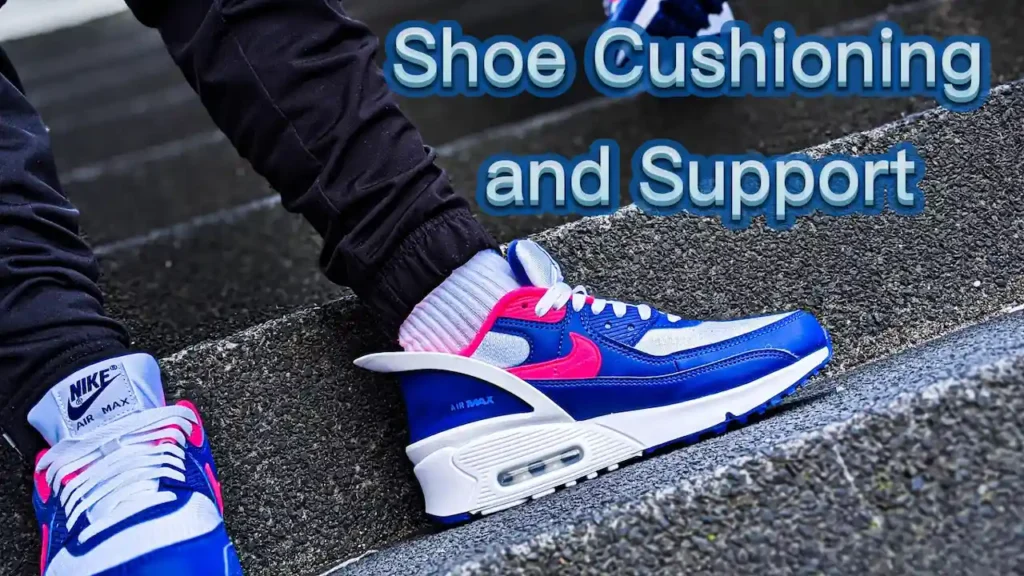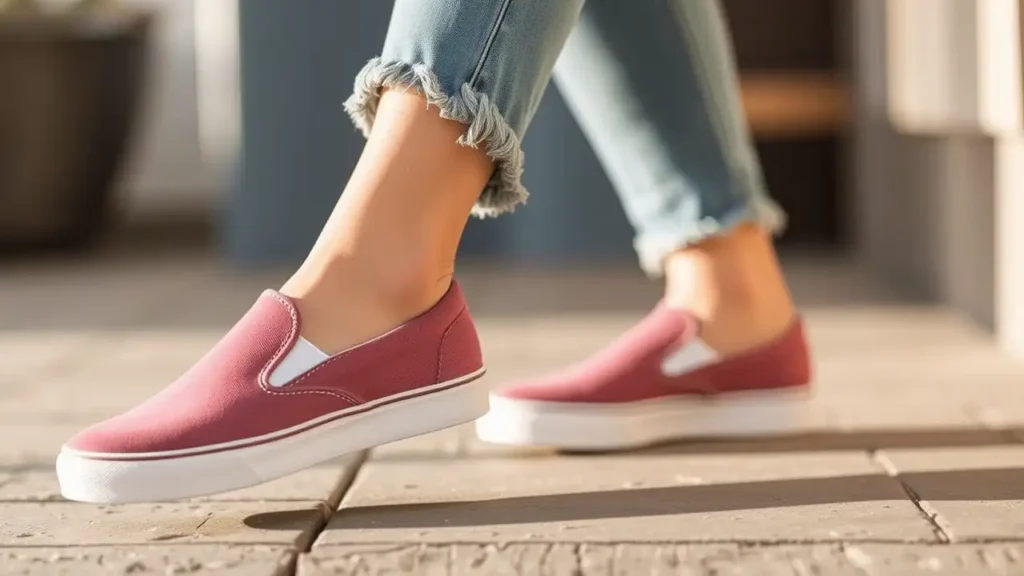Flamenco, a vibrant and emotionally charged art form originating from southern Spain, is celebrated for its powerful rhythms, expressive movements, and intricate footwork. Central to the performance is the dancer’s footwear, which does more than protect the feet—it becomes a vital instrument of sound and expression.
The unique design and construction of flamenco shoes play a crucial role in producing the characteristic percussive elements of the dance. Understanding the importance of footwear in flamenco reveals how form, function, and tradition come together to enhance the authenticity and impact of each performance.
The Role of Footwear in Flamenco Dancing
Footwear is the heartbeat of flamenco dancing. Without the right shoes, a dancer cannot fully express the rhythm, emotion, and power that define this passionate art form.
The Sound That Defines the Dance
Every stomp, every tap, every sharp heel click in flamenco comes from the shoes. These sounds are not just background noise—they are the music itself. In fact, over 60% of the rhythm in a flamenco performance is created by the dancer’s feet. Without proper footwear, the dance loses its voice.
Flamenco is more than movement; it’s storytelling through sound and motion. Dancers use their shoes to strike the floor with precision, creating sharp, crisp beats. The heel and toe taps add layers to the music, working alongside the guitarist and singer. This connection would be impossible without shoes built for impact and control.
Flamenco shoes are different from any other dance shoe. They have reinforced toes and high heels made to handle constant striking. The soles are firm, allowing for clean, clear sounds with each step. Every part of the shoe has a role, making them essential tools for dancers who want to perform at their best.
Protection and Performance Go Hand in Hand
Dancing flamenco is intense. Hours of practice and performance can take a toll on the body. Proper footwear supports the feet, ankles, and legs, reducing the risk of injury. It also gives dancers the confidence to move boldly, knowing their shoes will hold up under pressure.
The design of flamenco shoes has changed little over time. This is because tradition and function are closely linked. The shape, material, and structure all serve a purpose. Wearing authentic flamenco shoes connects today’s dancers to generations before them while supporting modern techniques.
You can tell the skill of a flamenco dancer by the clarity of their footwork. Crisp, well-timed sounds show control and experience. Shoes play a big role in this. Poorly made or unsuitable footwear muffles the sound and limits movement. Good shoes, however, allow the dancer to shine.
Comfort matters. A shoe that fits well allows for better balance and sharper steps. It also prevents blisters and discomfort during long performances. Each dancer spends time finding the pair that feels like an extension of their body. This connection is vital for both safety and expression.
In flamenco, the dancer is part of a trio that includes the singer and guitarist. But unlike instruments, the dancer’s tool is their body—and especially their feet. With each strike of the shoe, they join the rhythm section. This makes footwear not just important, but essential to the music.
Wearing the right shoes is also a sign of respect for the culture of flamenco. It honors the roots of the dance and shows commitment to its traditions. For many dancers, stepping into flamenco shoes means stepping into history, pride, and identity.
The Specialized Shoes of Flamenco Dancers
Flamenco dancers wear specially designed shoes that produce sharp, clear sounds with every step. These shoes are built to handle intense footwork and enhance the rhythm of the dance.
The Signature Look and Structure
Flamenco shoes for women are usually black or red, with a short ankle strap and a sturdy heel. Men’s flamenco shoes look like dress shoes with heels and have laces. Both styles have nails on the soles and heels to create crisp, loud sounds when striking the floor.
Women’s flamenco shoes typically have heels between 1.5 and 3 inches tall. These heels are strong and narrow, made to support fast movements and sharp landings. The height helps with balance while adding drama to each step.
The soles of flamenco shoes are firm and made from wood or hard plastic. This gives dancers a solid surface to strike the floor with control. Unlike soft-soled dance shoes, flamenco soles are meant to be heard, not just felt.
Both men’s and women’s flamenco shoes have steel taps on the toes. These metal plates allow dancers to create extra beats by tapping the front of the shoe on the floor. The toe taps work with the heel to add layers of sound to the music.
Flamenco shoes are made from durable materials like leather or satin. Leather is common for practice shoes because it holds up to daily use. Performance shoes may have satin finishes for style but still include reinforced toes and heels for strength.
A proper fit is crucial in flamenco shoes. They must hug the foot tightly to allow quick changes in direction and precise foot strikes. A loose shoe can cause injury or make the dancer lose control during fast sequences.
Designed for Different Styles
There are two main types of flamenco shoes: zapatos de tacón (heeled shoes) for women and zapatos de horma (flat-heeled or low-heeled shoes) for men. Each type supports the unique movements and rhythms of male and female flamenco styles.
Though styles may vary slightly over time, the basic design of flamenco shoes has stayed true to its roots. Every part of the shoe serves a purpose—sound, stability, and safety—while honoring the traditions of this powerful dance form.
For a flamenco dancer, these shoes are more than footwear. They are instruments, tools, and symbols of dedication. Choosing the right pair is a serious decision, one that affects how well a dancer can express emotion through rhythm and movement.
How Flamenco Shoes Amplify Rhythm and Sound in Performances
Flamenco shoes are the unsung heroes of rhythm in flamenco performances. They do more than protect the dancer’s feet—they create sound, support timing, and bring energy to every step.
The Beat Begins with the Shoe
A single flamenco performance can include over 200 foot strikes in just a few minutes. Each one must be sharp, clear, and perfectly timed. This is where the design of flamenco shoes comes into play. Every part of the shoe works together to produce strong, crisp sounds that drive the music forward.
The heel of a flamenco shoe is not just for height—it is a tool for sound. Dancers strike the floor hard, using the heel to create deep, resonant beats. These sounds form the base rhythm, giving structure to the dance. Without this strong foundation, the performance would lose its pulse.
Steel taps on the front of the shoe let dancers add quick, high-pitched clicks to the rhythm. These toe taps give texture to the music, creating layers of sound. In fast sequences, dancers switch between heel and toe with precision, building complex rhythms that match the intensity of the song.
Soles That Support Sound
The sole of a flamenco shoe is stiff and solid, made from wood or hard plastic. This allows the dancer to hit the floor with full force while staying in control. A soft sole would absorb the impact, muffling the sound. A firm sole ensures each movement is heard loud and clear.
Underneath the sole and around the heel, small nails are placed with care. These nails make contact with the wooden stage, creating sharp, distinct sounds. Without them, the footwork would lack clarity. The nails turn each step into a musical note, adding richness to the performance.
Flamenco shoes fit snugly to allow exact movements. A loose shoe would slide or shift during fast steps, causing missed beats. A tight fit gives the dancer full control, making it easier to land each sound with accuracy. This level of control is essential for maintaining rhythm throughout a performance.
In flamenco, rhythm is a language. Dancers use their shoes to “speak” with the guitarist and singer. They respond to changes in tempo and mood through shifts in footwork. The shoes act as an instrument, allowing the dancer to join the conversation without words.
Because flamenco shoes are built with consistency in mind, dancers can rely on them to produce the same sound every time. This predictability helps them stay in sync with the music. It also builds trust between the dancer and the rest of the performers, strengthening the connection on stage.
For centuries, flamenco shoes have been designed with rhythm at the core. Their structure has changed very little because it works. Modern materials may improve comfort, but the basics remain the same. This respect for tradition keeps the heart of flamenco alive in every performance.
When a dancer strikes the floor in flamenco shoes, the sound travels. It fills the space, drawing attention and emotion from the audience. Unlike softer dance styles, flamenco demands presence. The shoes help deliver that presence by making every move count.
Expression Through Impact
Each dancer uses their shoes differently. Some favor heavy heel strikes, others mix light and strong beats. This personal style shows through the way they use their footwear. The shoes allow for individual expression while keeping the rhythm intact.
Flamenco is intense. Dancers leap, spin, and stomp with full power. Yet, they must stay in control. The right shoes provide stability while letting them go all out. This balance makes it possible to perform with both strength and grace.
In flamenco, the dancer is part of a trio that includes a singer and guitarist. The dancer’s feet become the percussion section. With each tap and stomp, they keep the rhythm alive. The shoes make sure those beats are heard clearly, supporting the music like a drum would.
To anyone watching, the shoes might seem simple. But for the dancer, they are essential tools. They shape how the dance is felt and heard. Without them, flamenco would lose its driving beat and emotional depth.
Beginner vs. Professional Flamenco Shoes Compared
The difference between beginner and professional flamenco shoes is clear in structure, material, and sound. Beginner shoes are built for learning, while professional shoes are crafted for performance, precision, and lasting impact.
A Foundation for Learning
A new dancer needs shoes that feel stable and forgiving. Beginner flamenco shoes usually have softer soles and lighter heels. This helps with balance and makes it easier to practice basic steps without strain. These shoes are designed to support growth, not yet mastery.
Professional flamenco shoes are made to perform. They have harder soles, reinforced toes, and strong heels built for fast, sharp footwork. Every part of the shoe is structured to produce crisp, powerful sounds on stage. These shoes are not just tools—they are extensions of the dancer’s body.
Beginner shoes use synthetic materials or soft leather to keep costs low and comfort high. They may wear out faster under heavy use. Professional shoes are made from high-quality leather and durable wood soles. These materials last longer and improve sound clarity during complex routines.
Most beginner shoes have shorter, wider heels for better balance. This helps dancers focus on technique without worrying about falling. Professional shoes have taller, narrower heels that allow for sharper strikes and more dynamic movement. These heels take time to master but give greater control once learned.
In early training, sound clarity is less critical. Beginner shoes still produce sound, but not as sharply. Professional shoes are fine-tuned with nails and steel taps placed for maximum resonance. The result is a crisp, full-bodied beat that supports rhythm and musicality.
Beginner shoes tend to fit loosely to make them easier to put on and move in. This can limit precision in fast footwork. Professional shoes fit snugly, hugging the foot tightly for exact movements. A secure fit allows for quick direction changes and clean, controlled strikes.
Toe Taps and Reinforcement
Many beginner shoes come with basic toe taps that help students learn rhythm. However, they may not be as responsive as those on professional shoes. In advanced shoes, the toe taps are stronger and more precisely positioned. This allows dancers to create layered rhythms with confidence.
Practice wears down shoes quickly. Beginner models are not built to last through hours of daily training. Professional shoes are sturdier, able to handle long rehearsals and multiple performances. Their construction ensures they stay strong under intense use.
Some beginner shoes come in one size or limited options. They are made to fit many feet, not just one. Professional dancers choose custom-made shoes tailored to their feet. These provide better support, sound, and comfort, making them essential for serious performers.
Beginner shoes follow traditional designs but simplify elements for ease of use. They focus on function over finesse. Professional shoes maintain tradition while meeting the demands of modern flamenco. Every detail serves the dance, from heel height to nail placement.
A new dancer needs shoes that allow for mistakes and adjustments. Beginner shoes offer this kind of support. As skills grow, so does the need for shoes that match higher expectations. Upgrading footwear is a sign of progress, not just preference.
New dancers may not fully understand how shoe design affects sound. They focus more on steps than on rhythm quality. Professional dancers know exactly how each part of their shoe contributes to sound. They rely on their shoes to deliver precise beats in every performance.
Wearing professional shoes signals readiness for the stage. These shoes feel different—more solid, more responsive. They give dancers the confidence to move with power and grace. Knowing the shoes will hold up and sound right makes a real difference in live shows.
Choosing professional shoes is not just about appearance. It is a commitment to the art form. These shoes reflect dedication, skill, and respect for flamenco. They are not worn lightly, but earned through hard work and practice.
Can Regular Dance Shoes Work for Flamenco?
Regular dance shoes are not suitable for flamenco dancing. They lack the structure, sound-making features, and durability needed to perform this powerful, rhythm-driven art form effectively and safely.
The Sound of Flamenco Cannot Be Imitated
Flamenco is built on sharp heel clicks, strong toe taps, and deep foot strikes. These sounds come from specially designed shoes with nails, steel taps, and firm soles. Regular dance shoes absorb impact instead of amplifying it. Without the right footwear, a dancer cannot produce the full, crisp beats that define flamenco.
Flamenco shoes have reinforced toes and heels to handle constant impact. Regular dance shoes are made for lightness and flexibility, not forceful footwork. This mismatch can lead to injury or poor technique. A shoe must support the body when striking the floor repeatedly at full strength.
The sole of a flamenco shoe is hard—made from wood or thick plastic—to allow clean, loud contact with the floor. Soft-soled dance shoes bend and give under pressure, muffling sound and reducing control. In flamenco, every step must be heard and felt. This is impossible without the right kind of sole.
Flamenco heels are narrow and strong, built to strike the floor with precision. Regular dance shoes either have flat soles or soft heels not meant for heavy use. Using them for flamenco leads to instability and weak rhythm. A proper heel gives dancers both balance and power.
Professional flamenco shoes include steel taps on the front to create sharp, high-pitched sounds. Many regular dance shoes do not have these at all. Even those that do place them incorrectly or use materials that wear down quickly. Without functioning toe taps, dancers lose an important layer of rhythm.
Support for Fast, Complex Movements
Flamenco footwork moves quickly between heel and toe, requiring a shoe that holds the foot securely in place. Regular dance shoes tend to fit loosely, making fast changes difficult and unsafe. A snug, structured fit is essential for maintaining speed, clarity, and control.
A single flamenco performance can include hundreds of hard foot strikes. Regular dance shoes are not built to handle this level of impact. They break down faster, leading to discomfort and risk of injury. Flamenco shoes are made to last through intense practice and stage work.
Flamenco shoes have changed little over time because their design works. Every part of the shoe serves a purpose—sound, stability, safety. Regular dance shoes may look similar but miss the key elements that make flamenco possible. Trying to dance flamenco in them is like playing a piano with missing keys.
In flamenco, the dancer’s feet are part of the music. Without the right shoes, the rhythm becomes dull or unclear. This affects not just the dancer, but also the singer and guitarist who rely on the beat. The entire performance suffers when the footwear does not match the style.
Learning With the Wrong Shoes Can Harm Technique
Beginners who start with regular dance shoes may develop bad habits. They learn to compensate for lack of sound or support, which slows progress. Building good technique requires feedback from the shoes. Wearing improper footwear makes that feedback unreliable.
Some dancers choose regular shoes because they feel more comfortable at first. But comfort should not come at the cost of function. A properly fitting flamenco shoe may feel different at first, but it supports better movement and growth over time.
Using the wrong shoes increases the chance of ankle twists, foot pain, and long-term damage. Flamenco requires sudden stops, jumps, and strong landings. Regular shoes do not offer the protection needed for these movements. Safety must always come first.
On stage, every sound matters. Dancers need shoes that deliver clear, powerful beats. Regular dance shoes cannot provide this quality. The audience hears the difference. A performance loses energy and authenticity when the dancer’s feet are not equipped for the job.
Choosing real flamenco shoes is not about luxury—it is about respect for the dance. It shows commitment to learning correctly and performing well. The right shoes help a dancer grow, improve, and connect with the tradition of flamenco.
Selecting Flamenco Shoes for Practice and Performance
Choosing the right flamenco shoes for practice and performance starts with understanding your skill level, style of dance, and the sound you want to create. The perfect pair supports your growth, feels comfortable, and helps you express yourself clearly through every step.
Know Your Purpose: Practice or Performance?
Shoes for daily practice are built for endurance, not just appearance. They need to handle hours of foot strikes without breaking down too fast. Performance shoes focus on sound quality, visual appeal, and a polished look. Choosing the right type for each setting saves money and protects your feet.
A good fit is the most important part of any flamenco shoe. It should feel snug but not tight, holding your foot securely in place. Your toes should have room to move slightly, but not so much that your heel lifts. A loose shoe leads to poor control and possible injury.
Beginners usually do better with shorter, wider heels for better balance. These heels allow for steady footwork while learning basic rhythms. As skills grow, taller, narrower heels can be introduced for sharper sounds and more dynamic movement. Choosing the right height avoids strain and builds confidence.
Sole Firmness Shapes Sound and Control
Look for a firm sole made from wood or hard plastic. This gives clear, crisp sounds when striking the floor. Softer soles may feel easier at first, but they dull the rhythm over time. The sole must support both sound and stability during fast sequences.
Steel toe taps help create sharp, high-pitched beats that add texture to the music. In beginner shoes, these taps should be sturdy enough to last through regular use. On performance shoes, they must be precisely placed for maximum clarity. Poorly installed taps make it harder to build complex rhythms.
The nails under the heel and around the sole shape the sound of each step. Too few or poorly placed nails lead to weak beats and unclear rhythm. Quality shoes come with nails set for full contact with the floor. This small detail makes a big difference in how the dance is heard.
Leather is the best choice for most dancers—it molds to the foot and lasts longer. Satin and synthetic materials may look elegant but wear out faster under heavy use. For practice, durability matters most. For stage, style plays a bigger role.
Constant tapping wears down the front of the shoe quickly. Look for reinforced toes that hold up to repeated strikes. This feature keeps the shoe strong and prevents early damage. A well-built toe area also improves sound consistency.
Women usually choose heeled ankle strap styles with steel taps and nails. Men go for lace-up shoes with a lower heel and similar sound features. Each style supports different movements and rhythms. Pick one that matches your technique and comfort level.
Tap the shoe on a wooden surface to check its sound. A good flamenco shoe should produce clear, sharp beats with each strike. Muffled or inconsistent sounds mean the shoe isn’t right for the dance. Always test before committing.
Some shoes feel stiff at first and take time to mold to your feet. Others are flexible from the start. Don’t rush the process—let the shoe adjust naturally to avoid blisters or discomfort. A little break-in time is normal, but pain is not.
Custom Shoes Offer Better Fit and Sound
For serious students and professionals, custom-made shoes offer the best fit and performance. They are built to match your exact foot shape and style needs. While more expensive, they last longer and support better technique. Investing in custom footwear pays off over time.
Teachers and seasoned performers know what works. They can guide you toward brands and models that suit your level. Their advice helps avoid common mistakes in shoe selection. Learning from others speeds up your progress.
Lightweight shoes seem easier at first, but they can feel unstable during fast steps. A balanced shoe allows for smooth transitions between heel and toe. Pay attention to how the shoe feels in motion, not just when standing still.
Worn-out soles, missing nails, or broken taps change the sound and safety of your dance. Keeping old shoes too long leads to bad habits and injury risk. Know when it’s time to upgrade to a fresh pair.
Footwear in flamenco dance is far more than a costume accessory; it is a tool of expression, rhythm, and artistry. The right pair of shoes allows dancers to channel emotion, maintain precision, and create the powerful sound that defines flamenco’s distinctive style.




